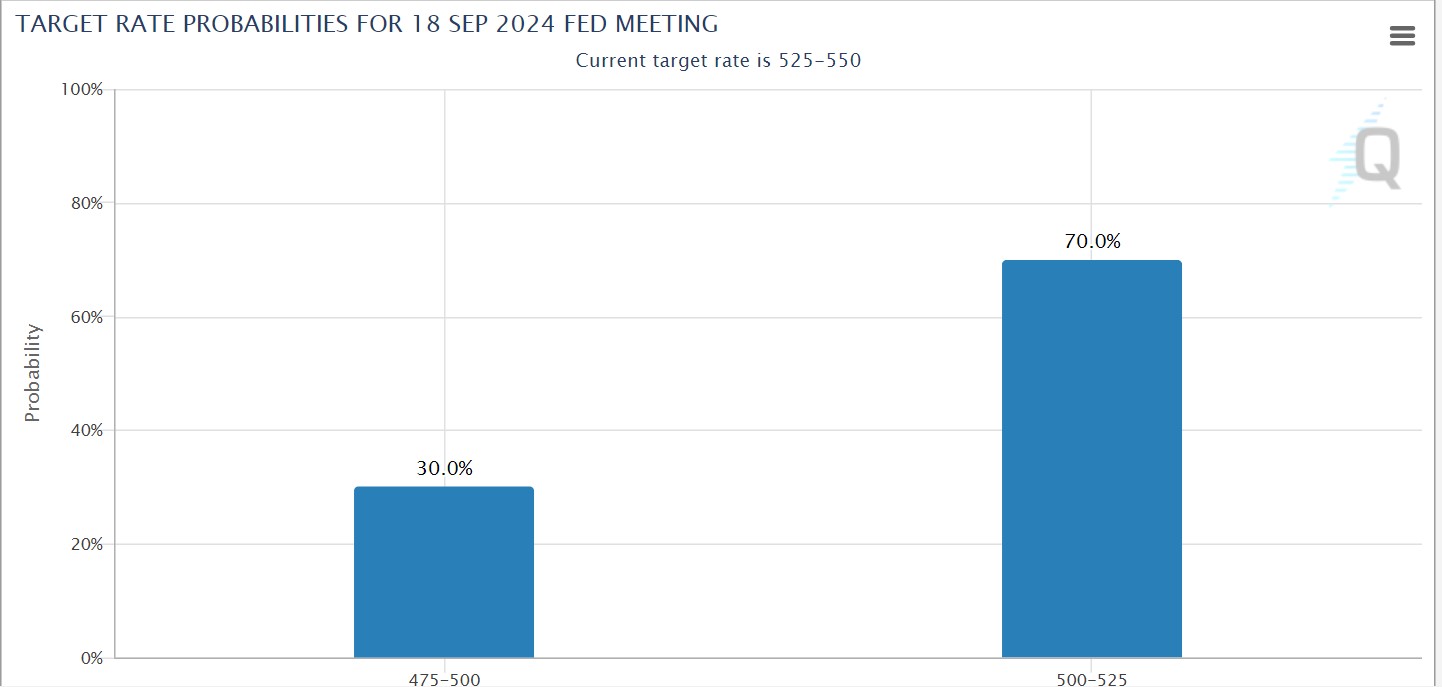As the 2024 U.S. presidential election approaches, the Federal Reserve’s monetary policy decisions are under intense scrutiny, particularly in light of recent economic data and market reactions. The September CME target rate predictions revealed a nearly even split between expectations for no rate cut and a 25 basis point reduction. However, the latest unemployment report drastically shifted these expectations, with the probability of no rate cut soaring to 70%. This shift has raised concerns about the potential manipulation or selective interpretation of economic data to serve political ends, especially with the election looming in November.

The Unemployment Report and Market Reactions
The U.S. unemployment report released in early September 2024 played a crucial role in altering market expectations. The report showed a surprising resilience in the labor market, with non-farm payrolls significantly exceeding expectations at 336,000 versus the anticipated 170,000. Despite this robust job growth, the unemployment rate remained steady at 3.8%, a result that led many to speculate that the data could be revised downward in the future (Cointelegraph).
This stronger-than-expected job growth put pressure on the Federal Reserve to maintain its current interest rates, leading to a spike in the probability of no rate cut in September. The Fed has consistently indicated that a cooling labor market is essential to curbing inflation, so this report was not what they hoped to see (Cointelegraph).
Bitcoin, often seen as a barometer for risk sentiment in the market, reacted sharply to the news, with its price plummeting to $52,000. This drop highlights the broader market’s sensitivity to shifts in monetary policy expectations. Investors, who had been betting on a rate cut, quickly adjusted their positions, leading to increased volatility across risk assets (Investopedia).
The Fed’s Dilemma: To Cut or Not to Cut
The Federal Reserve now faces a delicate balancing act. On one hand, maintaining higher interest rates could help curb inflation, a primary concern for the Fed. On the other hand, a rate cut could provide a much-needed boost to the economy, especially as the election approaches. The timing of any rate cut is crucial, as it could be perceived as politically motivated, particularly if it occurs too close to the election.
Some analysts argue that the Fed may prefer to delay any rate cuts until just before the election, using the strong unemployment data to justify this decision. By doing so, the Fed could buy itself more time to assess the economic landscape while also potentially influencing voter sentiment. A rate cut in the months leading up to the election could create a sense of economic stability, which might benefit the incumbent administration (The White House) (Investopedia).
The Potential for Data Manipulation
The significant shift in market expectations following the unemployment report has led to speculation about the potential for data manipulation or selective presentation. With the stakes so high, there is concern that economic data could be used to serve political purposes, giving the Fed the cover it needs to delay or implement rate cuts strategically.
The history of using economic policy to influence elections is not new. Monetary policy, in particular, has been a powerful tool in shaping public perception of the economy. In an election year, the Fed’s decisions are closely watched, as they can have immediate and far-reaching impacts on everything from stock prices to job creation (Cointelegraph).
Conclusion: The Intersection of Economics and Politics
As we move closer to the 2024 election, the intersection of monetary policy and politics will become increasingly important. The Federal Reserve’s actions in the coming months will be scrutinized not only for their economic rationale but also for their potential political implications. With market expectations in flux and the possibility of data manipulation looming, the Fed’s decisions could have a profound impact on the outcome of the election.
In this context, it is essential to remain vigilant and critical of the data presented. The relationship between monetary policy and electoral politics is complex, and the decisions made by the Federal Reserve could very well tip the scales in this closely contested election.



